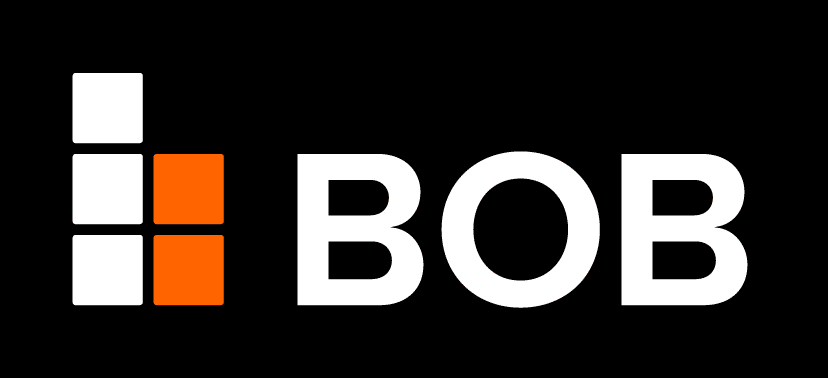The development of BOB, which launched its mainnet on Wednesday, is part of a cultural shift towards experimentation within the Bitcoin ecosystem.

Build on Bitcoin seeks to combine the best of Bitcoin and Ethereum.
(BOB)
Posted May 1, 2024 at 11:26 am EST.
Build on Bitcoin (BOB), a new layer 2 project that wants to bring Ethereum decentralized finance (DeFi) to the Bitcoin blockchain, unveiled its main network (mainnet) on Wednesday.
The platform features bridges to connect multiple blockchains, rollups to batch transactions for faster processing, and an Ethereum Virtual Machine (EVM) to create and execute smart contracts — all components that seek to leverage the best of the two largest blockchains.
The development is part of a cultural shift towards experimentation within the Bitcoin ecosystem, which has historically favored a more conservative approach that prioritizes security, incremental innovation, and a narrow focus on the monetary applications of Bitcoin.
“BOB has been running a pre-commitment phase for a month now, where people could pre-commit liquidity,” said BOB Co-founder and CEO Alexei Zamyatin in a recent interview with Unchained. “And now that’s essentially reached $300 million in TVL.”
Total value locked (TVL) is a metric that represents the dollar value of assets committed to a DeFi platform.
BOB’s Origin Story
The project is not Zamyatin’s first rodeo. In 2019, he and fellow BOB co-founder and CTO Dominik Harz launched a research and development firm. The two Computer Science PhDs, who both attended Imperial College in London, then created Interlay, a Bitcoin bridge for DeFi users on the Polkadot network.
“For me, this is actually year nine working in Bitcoin,” Zamyatin said. “We have some of the largest existing Bitcoin DeFi projects going live on BOB. We’ve had almost 30,000 people participate in phase one and we hope to grow.”
The project raised $10 million in a seed round led by crypto venture capital firm Castle Island Ventures with participation from the likes of Coinbase Ventures and angel investors such as popular Bitcoin advocate Dan Held and pseudonymous BRC-20 inventor “Domo.”
A Bitcoin Renaissance?
Experimentation and innovation on the dominant blockchain date back to as early as 2010 when applications such as BitDNS (which eventually became Namecoin) were conceptualized and later developed.
These early projects eventually fell into obscurity, however, and when Ethereum was launched in 2015, it quickly became the de facto platform for DeFi, decentralized applications (dapps), and NFTs.
But in early 2023, Casey Rodarmor launched the Ordinals protocol which enabled the creation of NFTs on the Bitcoin blockchain, marking the beginning of what some refer to as the “Bitcoin renaissance.”
“We have fifteen projects on the DeFi side going live on day one, and then I think half a dozen on the NFT Ordinals side,” said Zamyatin. “What we provide is infrastructure to make this super easy for users to experiment with.”
The rebirth of experimentation on Bitcoin has led to a proliferation of startups capitalizing on the growing trend.
Citrea by Chainway Labs is a recently launched project that says it’s the first zero-knowledge rollup on the Bitcoin blockchain. Zero-knowledge proofs use cryptography to prove the validity of information without revealing the information itself.
Botanix Labs is building a layer 2 platform that combines the EVM with a dynamic set of decentralized Bitcoin multi-signature wallets (multisigs), effectively creating a hybrid platform.
Merlin Chain is yet another EVM-compatible Bitcoin layer 2 project seeking to “unleash the potential of Bitcoin and Ordinals.”
One thing that Zamyatin said differentiates BOB from these other platforms is the experience his team brings and their long-term goal of giving back to the Bitcoin community.
“We’ve been building in the Bitcoin space for a long, long time,” Zamyatin explained. “Our full focus is to not only integrate with Bitcoin, but actually with phase two, with merge mining, to inherit Bitcoin security and contribute back to [the] Bitcoin security budget.”
Ultimately however, the most important difference between BOB and other EVM-compatible Bitcoin layer 2s, according to Zamyatin, is the platform’s integration with Ethereum.
“The biggest distinction…I think, is that BOB has really taken a pragmatic approach by also connecting to Ethereum,” Zamyatin explained. “We’ve talked to many, many teams in this space…that’s exactly what they want right now… And this hybrid nature, I think, sets BOB apart from most of the competition.”
- SEO Powered Content & PR Distribution. Get Amplified Today.
- PlatoData.Network Vertical Generative Ai. Empower Yourself. Access Here.
- PlatoAiStream. Web3 Intelligence. Knowledge Amplified. Access Here.
- PlatoESG. Carbon, CleanTech, Energy, Environment, Solar, Waste Management. Access Here.
- PlatoHealth. Biotech and Clinical Trials Intelligence. Access Here.
- Source: https://unchainedcrypto.com/new-project-build-on-bitcoin-wants-to-lead-the-bitcoin-layer-2-renaissance/



